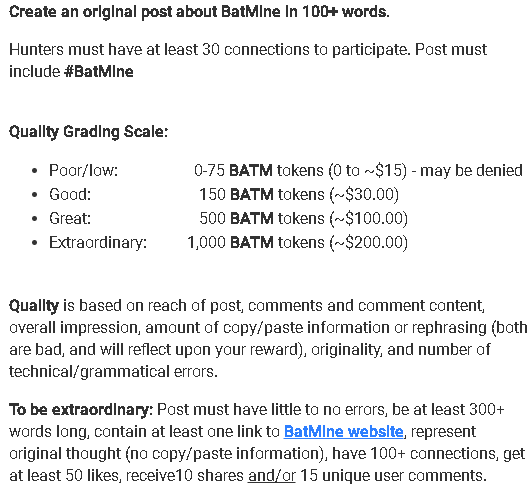The Marketing Realities Of Crypto Bounty Hunters And Airdrops
The advent of cryptocurrencies has revolutionized the way we think about money. And as money is the lifeblood of every business, digital tokens have also brought into question business development strategies. Instead of hiring a single freelancer to complete a specific task, for instance, a project can now leverage the wisdom of the crowd to achieve a common goal through something called “crypto bounties.” Similarly, startups can get their token into thousands of hands via “airdrops” and bootstrap a cryptocurrency’s adoption. Like everything in this industry, however, it’s not all roses. Although airdrops and bounty campaigns may seem like surefire ways to attract attention for your idea, they do come with a host of disadvantages.
In the following post, we’ll define both of these marketing approaches, outline the pros and cons, and then provide alternative ways of distinguishing your venture from the many others like it.
Microtasking And Bounty Hunters
Let’s say that you need your sink fixed or you want your house cleaned over the weekend.
In the past, people would typically call a plumber or some kind of cleaning service. The former demands a bit more know-how, while the latter is pretty straightforward. In the first case, you’d likely ask around to figure out a reliable plumbing service and schedule the appointment. In the latter, the barrier is a bit lower, which is also why platforms like TaskRabbit, Helpling, or Handy have been so successful. If you can clean, you can join these platforms. Simple as that.
But, let’s say as a third alternative, you placed an advertisement on Craigslist or Reddit describing the nature of both tasks. You set a price, a date, leave some contact information and wait for messages to flood your inbox. It might make sense for tidying up your house, and maybe even for fixing your sink, but the process is as tedious if not more so than just opening your phone book and scheduling an appointment with a professional.
In the digital world of crypto, this friction has been removed. Startups in the space are frequently posting tasks on different platforms for able and relevant participants to complete. Few of the tasks resemble those from the above example, but the principles are relatively the same: a founder or a small startup team has too many things to do and too little time, so they pass it off to the crowd, their community, for completion.
These tasks can range from auditing source code for errors, generating content for a blog, or reposting announcements on social media. The price for each task, also known as “bounties,” are also often paid out in the startup’s native token.
 The most common bounties are those that companies place on finding vulnerabilities in their code. In the case of Block.one, they paid one developer $120,000 to resolve 12 different bugs in the EOS source code. The same person also resolved issues with Tendermint, Monero, Stellar, and Tor.
The most common bounties are those that companies place on finding vulnerabilities in their code. In the case of Block.one, they paid one developer $120,000 to resolve 12 different bugs in the EOS source code. The same person also resolved issues with Tendermint, Monero, Stellar, and Tor.
It quickly becomes clear that crypto bounty hunting is a legitimate business for many.
Platforms like Bounty0x, HackerOne, and Bounties Network are all facilitating this gig economy by serving thousands of active bounty hunters. This practice is also interesting for companies who want to get their native token into the hands of users.
Skip The Bounty, Try Handouts Instead
Airdrops have been just as popular as bounty programs as it implies giving away tokens for free, or for performing a small task like signing up for a newsletter or an equivalent. This free, tokenized money is passed out to generate awareness around the project and observers are enticed to pick up a few in the event that the coin is listed on a major exchange.
Everyone likes free things, of course, so it’s easy to garner a bit of traction on social media and so forth via an airdrop campaign. It’s also a great way to on-boarding users.
The Polymath Network dished out 250 tokens to any user who signed up for their securities token platform and went through the KYC process. In the end, over nine million POLY tokens were distributed to 38,224 addresses. Not only that, but a week after the airdrop, the price of the token shot up to $1.